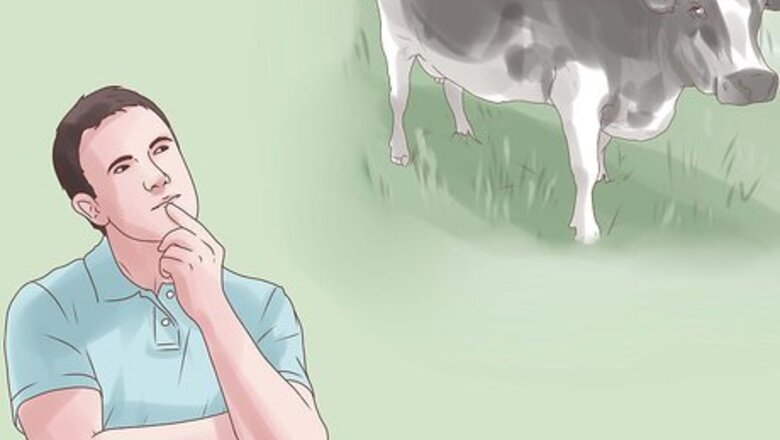
views
Know what kind of cattle you need.
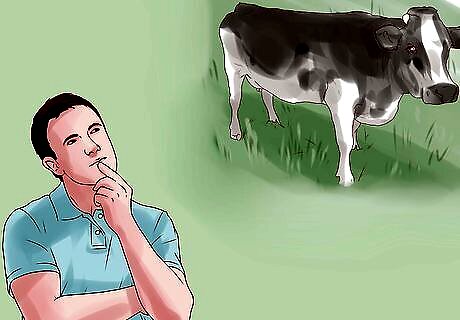
There are a variety of different cattle based on your goals. You need to already know what breed, age, weight, class and type of cattle you're looking for. The type of cattle you're looking for determines what breed (or composite) you're interested in. Type = beef or dairy. Class = age/sex group for a particular kind of livestock, in this case cattle. Classes for sale cattle include the following: Bulls: bull calf, weaner/weanling bull, yearling bull, 2-year old bull, mature bull, bologna bull Cows: bred cow, open cow, three-in-one (cow bred with calf at side), cutter cow, canner cow, slaughter cow. Heifer: bred heifer, feeder heifer, open heifer, heiferette, weaned heifer, heifer calf Steer: feeder steer, dairy steer, steer calf Weight is always approximate, rounded to 100 pounds (45 kg). A word about breeds with large horns: Be aware that large horns mean an increased risk of harming yourself when handling the cattle, as well as intimidating other animals including horses. Be sure you want to own cattle with large horns; they look good but they're harder to transport and to tether.
Set your budget.
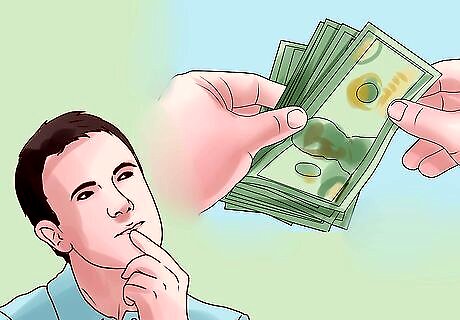
Cattle can be expensive, so you must know how much you can spend. This is always important, as you don't want to be buying an animal that you can't pay up front right away. It's also important to have a firm limit in mind when attending an auction, to avoid getting carried away. Of course, if you don't have the money right on hand, you will have to make arrangements to pay later, preferably as soon as possible so you don't forget.
Find cattle to buy.
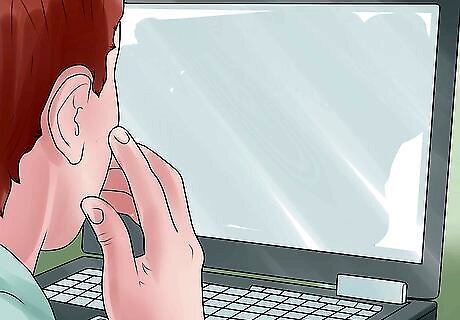
You can acquire cattle via private sales or public auctions. Wherever you wish to buy is your choice. Just remember that the auction (located at a local auction mart or "sale barn") is usually for selling culled or slaughter-only animals. You will need to be very vigilant and not wear your heart on your sleeve when picking and choosing which animal[s] to bid on and ultimately buy. You also won't be able to talk to or even get to know the owner of the animals going through the auction ring. There are exceptions, though. Farm or herd-dispersal auctions quite often are those that sell quality breeding stock to other producers to purchase. The cows, heifers and bulls being sold are what the owner had worked hard to raise and, because of retirement or switching to a different enterprise, a choice to sell them via auction is the best solution. And many auction marts or sale barns sell weaned steers that are quite healthy, though their destination is to be turned into beef, not as breeding stock. Private-treaty may be the best choice, as you have a chance to look at and study the animals you are wanting to buy and to talk to the owner as well if you have any questions. It also means a much reduced potential for exposure to disease that would occur in a generalized place of sale. Other places for purchasing cattle include breed registry or the breeders' websites, state, province or county fairs, online auction sites/forums/email lists (buyer beware), local media and magazines, and possibly your local veterinarian/agricultural teacher/other professionals involved in agriculture.
Reach out to the owner.
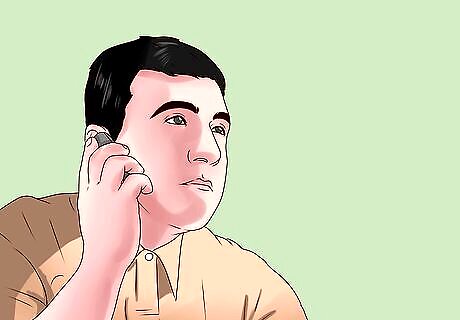
Contact the owner of the cattle to touch base. Explain that you're interested in coming over to look at his or her animals. Ask what time and date you should be expected to be there. For the auction you will have to phone the auction mart to get times on sale dates and what cattle are being sold on what date.
Set aside time to inspect the cattle.
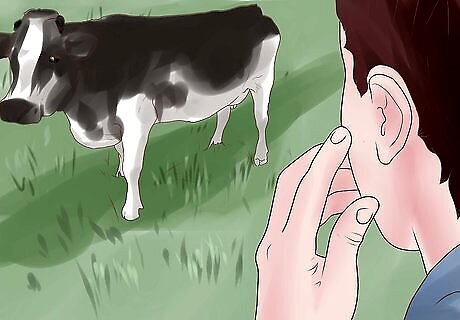
Always take a closer look before you agree to buy anything. Go to the farm or ranch and have a look at the owner's animals. You should be able to get a look at the other animals the owner has on his/her farm to see the overall condition and health they're in. Ask questions about breed, breeding, calving, weaning, age, health history, etc.For the auction, you should be able to have a look at the cattle in their pens prior to the start of sale, and when they go through the ring to make a quick judgement call on whether they're worth buying or not. Particular signs to look for include: Eyes: Should be bright, clear and not runny (no discharge), crusty or bloodshot. Nose: Should be cool, moist muzzle, with frequent licking; breathing should be regular, and not labored; beware of nasal discharge, coughing, wheezing or irregular/shallow breathing. Coat: Glossy, clean and generally unmatted (especially for long-haired breeds), free of extensive "tag" or dried feces over the body (exceptions can be made if there's some tag on the rump, though tails covered in tag need to be questioned); beware of hair coats that appear mangy with some or a lot of hair-loss, have crusty lesions (typically ring-worm), or appear dull and/or dry. Weight: Cattle should look to be at their average weight for their breeding; beware of severely emaciated or thin cattle (even with dairy cattle; if you can plainly see their ribs they're likely undernourished), or overly fat ones. Note, though, that judging body condition can be subjective. Attitude: Curious, alert and contented; beware of cattle that stand apart from the herd, seem disinterested in you, or show signs of aggressiveness, no matter how subtle those signs are. Check the location of the whorl on the forehead––the lower the whorl, the less flighty the animal. Mobility: Walking should be smooth and free of limps, legs and feet should look normal and free of sores, swelling, or lesions; beware of uneven gaits or subtle signs of injury by how the animal stands and walks on. Placement of hind feet to front feet is especially important with breeding stock, but not so much with stock being raised for meat. Udder (for dairy/breeding): It should be healthy; size isn't necessarily an indicator of a good udder, but rather placement of both front and hind ligaments. It should sit forward and square, not sag too much either in the front and rear quarters, and not be too meaty (or appear to have too many fat deposits). Observe the cow when she walks––the udder should not show too much sideways movement. Teats should be small and neatly grouped under the udder, not too large and/or sticking at odd angles.
Aim to get a lower price.
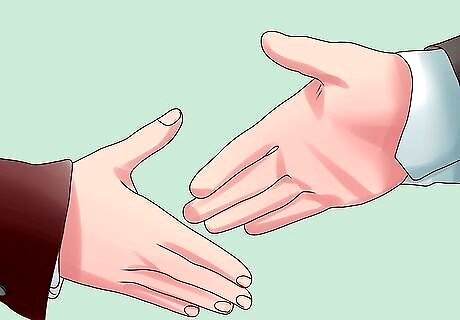
Like used car shipping, you can always negotiate over the cost of cattle. It is helpful to know what is a good price for the animals that are being sold beforehand to avoid getting ripped off (paying more than what they're worth) or worse. Most cattle sold by private treaty are either sold according to current prices on a $/cwt (one hundred weight) basis, except for purebred stock, which may be a little more expensive. In the auction, you have to have a maximum price you can bid up to for a particular animal, and keep bidding until either it gets sold to you, or the price is too high for you to bid on. If the animal[s] aren't worth your time or not to your expectations, neither buy nor bid on them. For buying cattle one-on-one, tell the owner you're just shopping around and exchange other small talk, then say a friendly "thanks for letting me look at your animals." When negotiating the price, don't just think about cash and cattle. Also request expertise as part of the price, namely, the ability to call the owner for a set time in the future to ask questions or seek help, especially where problems might arise. Ask to see––and then check––the relevant registration papers before signing for purchase. Also ask to see vaccination, de-worming and production records.
Settle the transaction.
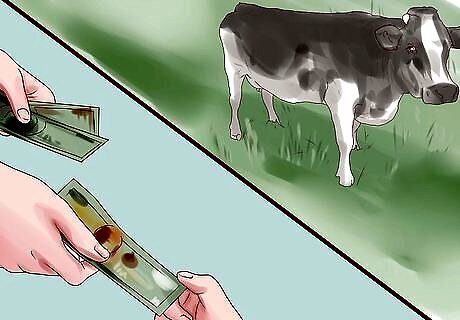
Purchase the cattle you've chosen once you’ve chosen the cattle. If they're worth it, and the owner and you agree on a price for them, buy them. When paying for the cattle, don't bring your credit card, debit card or any other card with you. Cash or cheque (check) is best for this sort of purchase. Most auctions are an exception though, as normally they will accept debit or even credit cards, in addition to cash or cheque (check). Ask if there is a guarantee. Not all sellers are willing to give this but where the seller is, get it in writing.
Arrange for transport.
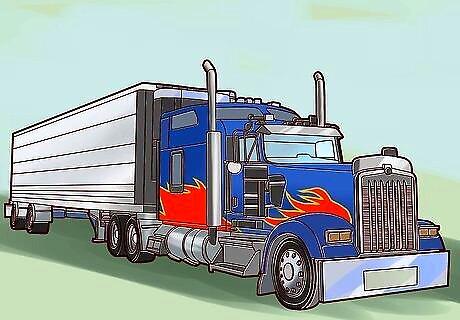
Bring the cattle home, to the farm, or to the factory. Normally the person buying the livestock should have a trailer to take them home in. If you don't have a trailer as of yet, you can arrange with the seller to haul them home for you. Once home, settle them into their new surrounds gradually, feeding them well and keeping a close eye on them for the first few days until they seem contented. Always have a separate area set up for new cattle being brought home. This gives them a chance to acclimate to their new space, see your existing cattle without actually having to meet them immediately and generally feel comfortable while settling in. If bringing home a bottle calf, have his or her milk replacement ready. If this is your first time for owning cattle, already know who your vet will be and have his or her contact details somewhere easily accessible. Also, have a halter and lead, adequate food, grooming gear and appropriate shelter.




















Comments
0 comment